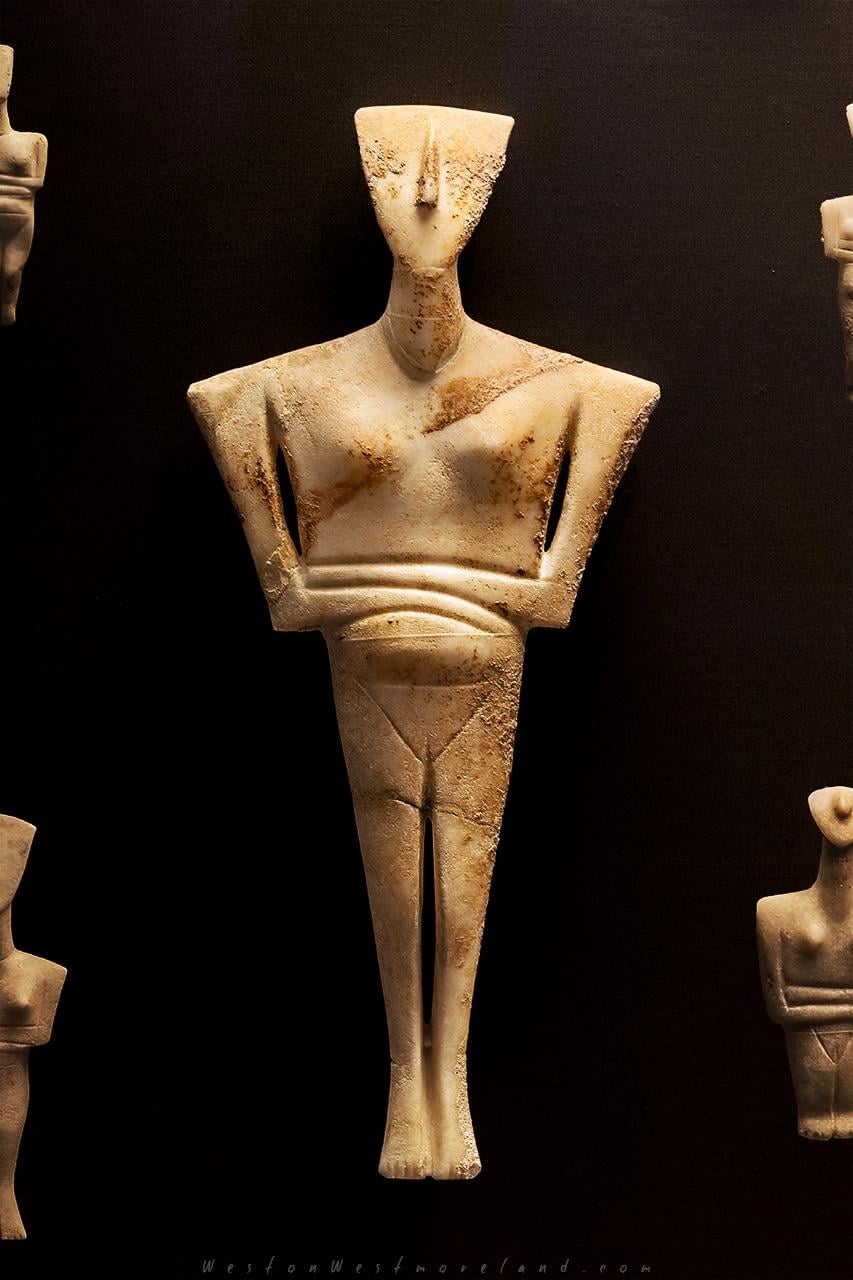
Marble female figurine, Early Cycladic (Neolithic), Greece, 2800-2300 B.C. The best known type of Cycladic art is the marble figurine, a full-length female with arms folded across the front. Their function remains uncertain, but most were found in graves, indicating a funerary role…[1280×853][OC]
by WestonWestmoreland

1 Comment
…This type of figurine is known to archaeologists as a “FAF” for “folded-arm figure(ine)”. Apart from a sharply defined nose, the faces are a smooth blank, although there is evidence on some that they were originally painted. The belly is slightly swollen, indicating a state of pregnancy. The works seem to resemble female figures, except for a few ones known as “the harpists”, which are figures of male musicians. Considerable numbers of these female figurines are known.
The figures are stylized; we find slightly curved or rounded lines and also sharp angular forms such as triangles and squares. The arms are crossed across the torso and are incised in low relief. Sometimes the details of the face are incised as well while the nose almost always is in high relief and based on a triangular form.
Cycladic culture flourished in the islands of the Aegean Sea from c. 3300 to 1100 BCE. Along with the Minoans and Mycenaeans, the Cycladic people are counted among the three major Aegean cultures. Cycladic art therefore comprises one of the three main branches of Aegean art.
These small statuettes or figurines, that were found across the islands, mostly in grave sites and sometimes in homes. They range in size from 6 inches to almost life-size. They are made of white marble, and many have been painted with encaustic paint, made by melting beeswax and mixing it with colorant. The pigments were made from ground-up earth minerals and sometimes just dirt. Black was achieved with carbon. Yellows and reds came from red and yellow ocher.
As usual, my apologies for inaccuracies and mistakes.